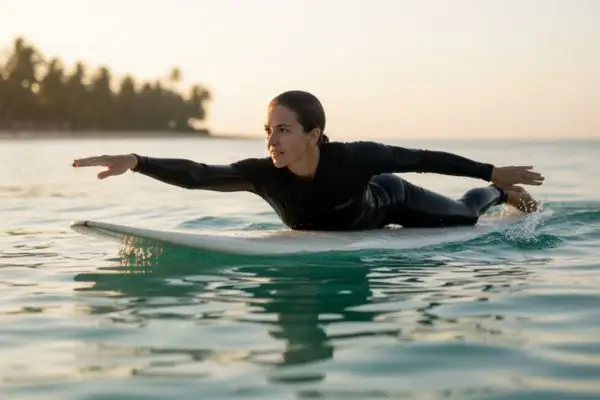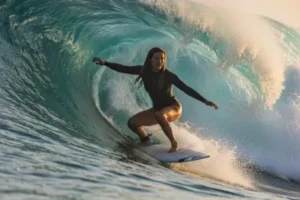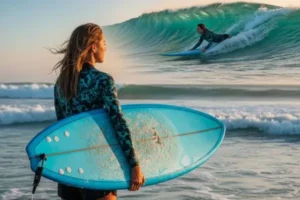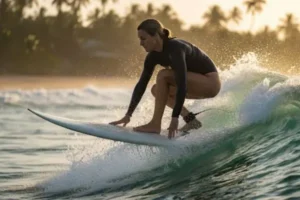For every surfer, paddling is the foundation that makes everything else possible. Without efficient paddling, catching waves feels exhausting, positioning becomes frustrating, and energy runs out quickly. For women beginning their surf journey, learning to paddle with technique rather than force ensures smoother sessions, more wave opportunities, and greater confidence in the water.
Why Paddling Matters
The surfboard may float, but it doesn’t move by itself. Paddling is the engine of surfing, allowing you to:
- Reach the lineup with less fatigue.
- Position yourself correctly to catch waves.
- Gain enough speed to match the energy of a breaking wave.
- Stay safe by moving away from dangerous zones.
For beginners, efficient paddling is often the difference between watching waves roll by and actually riding them.
Body Position on the Board
Correct body placement is the first step to efficient paddling.
- Centering: Your chest should be just above the midpoint of the board. Too far forward and the nose dips; too far back and the tail drags.
- Legs and Feet: Keep legs together, relaxed, with toes pointing back.
- Head and Chest: Keep your chest slightly lifted and your eyes forward. This reduces drag and helps guide direction.
Arm Movement and Technique
The way you move your arms determines how much power and glide you get per stroke.
- Deep Strokes: Reach forward fully, pull underwater in a straight line, and exit near the hip.
- Smooth Rhythm: Aim for long, steady strokes instead of rapid, shallow ones.
- Elbow Position: Keep elbows slightly high as you enter the water to maximize reach.
Breathing and Energy Conservation
Many beginners tire themselves out because they paddle without rhythm. Efficient breathing helps conserve energy:
- Breathe Regularly: Avoid holding your breath; exhale into the water and inhale with your stroke.
- Stay Relaxed: Tension in the shoulders wastes energy. Keep arms loose and movements fluid.
Timing and Wave Catching
Efficiency isn’t just about stroke technique — it’s also about knowing when to paddle.
- Early Start: Begin paddling before the wave reaches you to build speed.
- Commitment: Once you start, paddle with power until you feel the lift of the wave.
- Final Push: Add a few strong strokes as the wave catches the board. This seals the takeoff.
Common Mistakes Beginners Make
- Splashy Arms: Moving arms wide instead of in a straight pull reduces power.
- Looking Down: This sinks the nose and creates drag. Always keep eyes forward.
- Stopping Too Soon: Many beginners stop paddling as the wave approaches, losing momentum.
Practice Tips for Better Paddling
- Short Sessions in Whitewater: Paddle against small foam waves to build strength and rhythm.
- Intervals: Practice bursts of strong paddling followed by relaxed strokes to mimic real wave situations.
- Land Training: Push-ups, swimming, and light strength training improve endurance and paddle power.
Paddling may not seem glamorous, but it is the invisible skill that separates frustration from flow. For beginner women, developing paddling efficiency early creates a foundation for all other aspects of surfing. The smoother your paddling, the more energy you save for what really matters — enjoying the ride.




